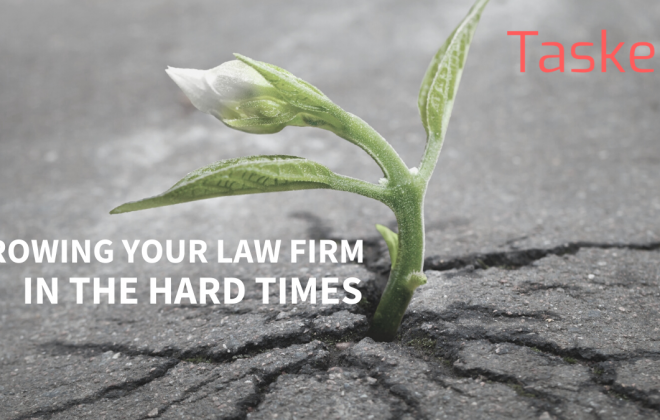Patrick has just left a meeting that held a promise of solving issues that his business struggles with on a daily basis. Unluckily for him, the rep he met had no idea about running client meetings the right way.
Patrick felt like he wasn’t listened to. The other person talked a lot about their company. Its technology. The other clients they helped. Things they did and how awesome their service was.
But Patrick had a feeling it’s more about the potential solution provider than about him or his business. The meeting lasted way too long and felt like a waste of Patrick’s time. And so he left, more irritated than convinced to buy.
Don’t turn your customers into Patricks. Here are 7 tips on running client meetings in a way that will help you attract and retain customers to grow your business.
Make it as easy as possible for the other party
The thing that people hate #1: having to do more when their plates are already full.
You want to avoid it at all cost.
Picture this.
The first sales rep invites you for an hour-long meeting in their company’s headquarters on the other end of your city (lots and lots of traffic!); they also leave it up to YOU to call them and arrange the date that fits their busy schedule.
Now imagine the second situation in which a sales rep offers to show up at your office and take no longer than twenty minutes of your time; you pick the date at your leisure without calling or emailing them.
The choice who to meet with is obvious.
The higher the company rank of the person you’re meeting, the fuller their calendar. Here comes the brutal truth: people don’t know you, don’t care about you and they won’t be willing to make an effort for you.
So make it as easy for them as possible to meet with you.
Pro tip: if you use Taskeo’s appointment scheduler, your client can choose one of the dates from your calendar that suit their schedule. No more tiresome emailing!
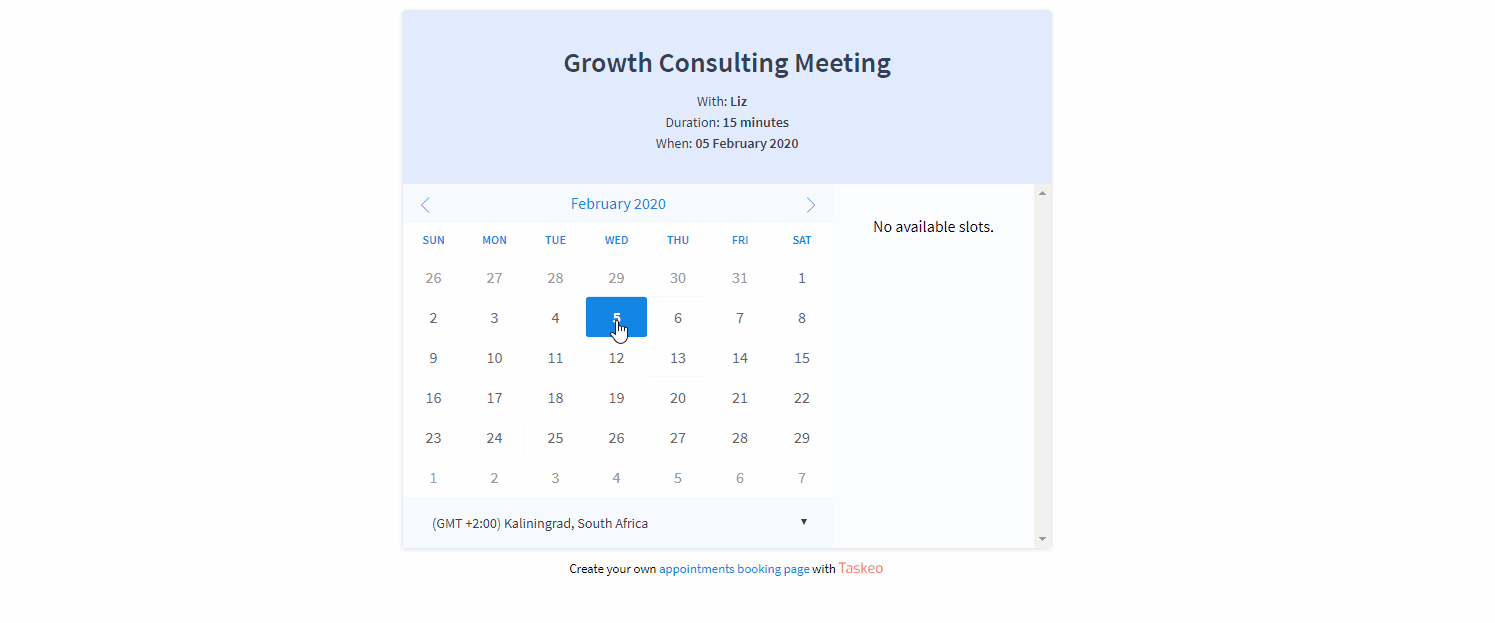
Scheduling meetings with Taskeo appointment scheduler
Read as well: Best Appointment Scheduling Software
Set the time frame
The thing that people hate #2: wasting time.
If you think people are thrilled to listen about your business for hours, sorry, but they are not.
Yes, they might be curious. Hopeful. Intrigued. But it still doesn’t mean they’re going to give you too much of their time.
As we said already, people are busy. So be careful how you use the time they give you.
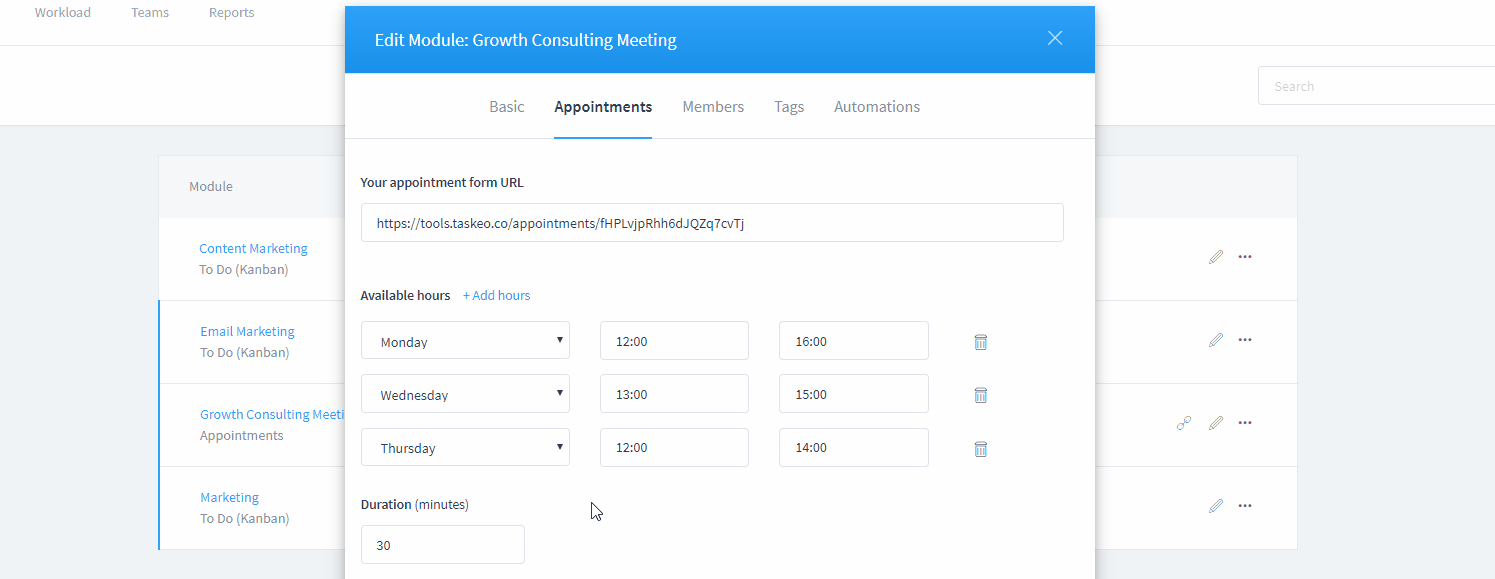
Limiting meeting duration in Taskeo
The shorter your meeting, the better. Of course, you want to go for the healthy balance between meeting length and its quality. The trick is to spend as little time as possible showing as much as you can to your customer without overwhelming them.
Tough as it sounds, that’s basically the way around it.
Prepare ahead
Don’t waste the precious meeting times on looking examples, samples or – even worse – words. Everything you’re going to need during a meeting should be prepared much ahead of it.
Know exactly what you want to say because you’ve got no time for “uhms” and “uhhs”. And they don’t make you sound confident either.
You know your audience. You know what troubles them and what questions they could be asking. Try to predict what are the blockers which can stop them from making further business with you. Then, armed with this knowledge, prepare how you’re going to counter their doubts and answer their inquiries.
It’s a good idea to have notes or decks with materials prepared for the meeting. Don’t forget to take notes on your client as you research their business before the meeting.
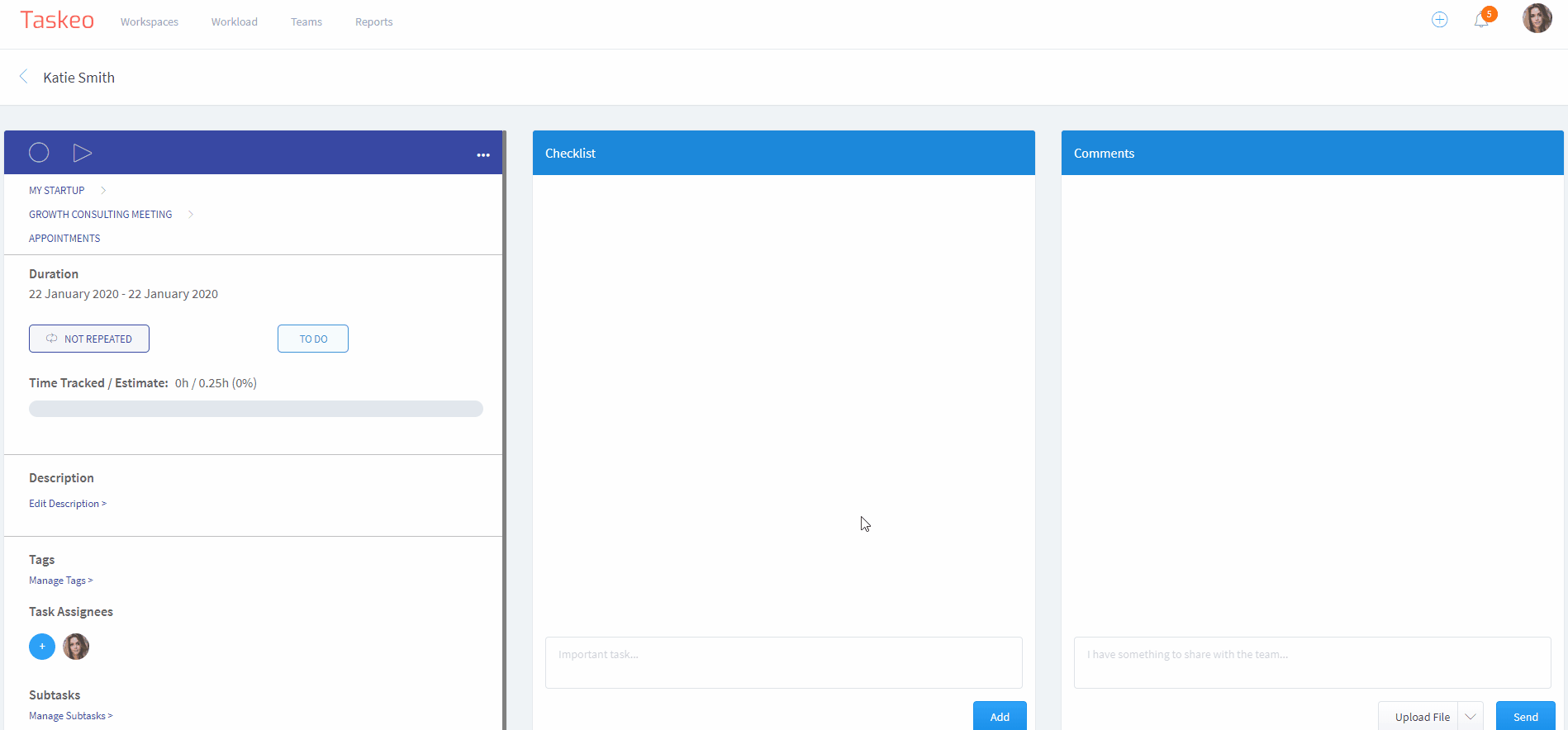
Taskeo allows you to take notes on your meetings
Which brings us to another point.
Customize the meeting
Have you ever read those interview tips which tell you to always customize your resume and never send out the same file to different companies?
The same tip applies to running client meetings.
You could also compare it to email marketing. If you send the same message template to every single person without any customization at all, people will easily tell you’re bulk-mailing hundreds or thousands.
Instead of running the client meetings just to recite your basic promotion formulas, do your homework beforehand. Learn more about the company. What have they done in the past? What issues are common in their niche? How big are they?
Dig into details that are specific for the company you’re talking to and then, weave your product narrative around them.
Make them feel like you’re tailoring your business to them instead of treating them like another checkpoint on your list.
Tell stories
For the last couple of years, storytelling has been a thing. And it has for a reason.
We’ve been told many times that in B2B, data is essential for sales and marketing. That people we sell and market to are driven by reason and logic.
This, however, isn’t exactly true.
In his bestselling book This Is Marketing, Seth Godin said that sadly, we’re not always acting reasonably. Not even when we’re purchasing for our businesses.
That’s why the stories are so popular.
Stories sell. Stories are something people can relate bto. We can’t relate to data and charts, no matter how convincing they are.
Numbers on charts don’t have faces. People in the stories do.
Tell more stories. Think about how you already helped people. What were your other clients capable of doing because of you? What was something unique that you’ve achieved, how did you change people’s lives?
Incorporate stories in your meetings. You can start by reading The Storyteller’s Secret by Carmine Gallo.
Ditch the monologue
Even if you don’t manage to sell your product or service, you can still leave the meeting with precious knowledge.
But you won’t if you’re the only person talking.
Let your (potential) customer talk and interact with you or your product. Ask them questions so they can talk about their business, their employees, their problems. If you’ve got software to show them, let them click around it. Ask what they think and how they feel about it.
If you can’t keep them as your customer, at least use your chance to learn more about the reason for it. Is it something in your product or service? If something changed, would they stick with you?
Be the leader of the conversation but not the only person who talks. Remember, running client meetings more about them and their business than you and your product.
Follow up with them
Many people focus on running client meetings as frequently as possible but don’t do much after the meeting is done.
Because people are busy, they may not get back to you even if they’d like to.
Follow up with them.
Even if you consider the meeting unsuccessful for some reason, it won’t hurt to send an email thanking them for their time. End things on a friendly note and they might yet think of coming back to you sometime.
The same goes for your more promising contacts. Nourish them with well-timed follow-ups and come back every now and then to check in.
Put these follow-ups on your calendar or to-do list so you don’t forget about them.
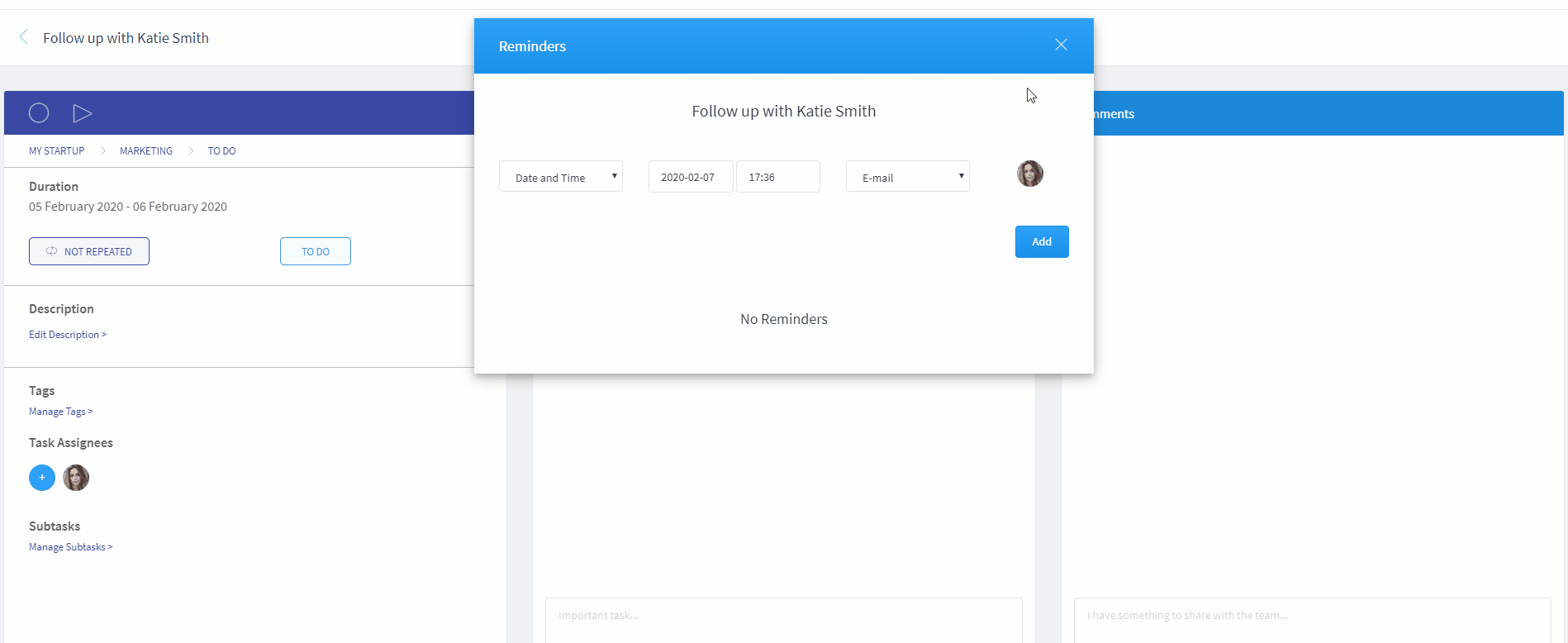
Setting a task reminder in Taskeo
Bottom Line
You won’t meet two people who are exactly the same.
Instead, you’ll encounter different personalities, goals and fears. What will work for one business, will not work for another. You’ll see there’s a variety of deal breakers that can discourage some of your potential clients.
Remember: you’re asking for their precious time. Make it worthwhile!






